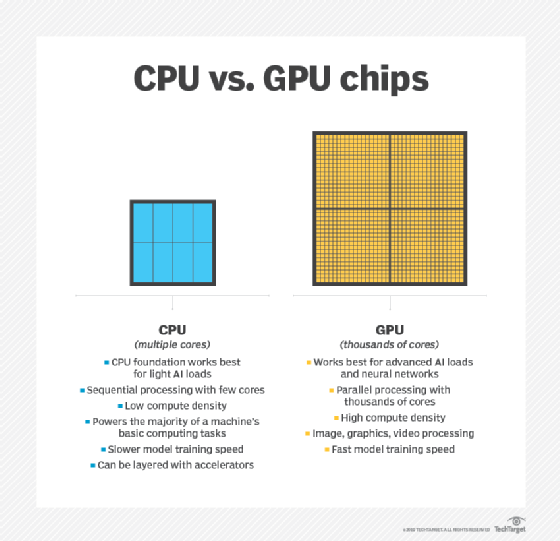Why Do You Think The Register At The Output Of The Alu Is Called The â€ëœaccumulatorã¢â‚¬â„¢?
What is an arithmetic-logic unit (ALU)?
An arithmetic-logic unit is the office of a cardinal processing unit that carries out arithmetic and logic operations on the operands in computer didactics words.
In some processors, the ALU is divided into two units: an arithmetics unit (AU) and a logic unit (LU). Some processors incorporate more 1 AU -- for example, i for fixed-point operations and some other for floating-point operations.
In estimator systems, floating-betoken computations are sometimes done past a floating-bespeak unit (FPU) on a dissever chip called a numeric coprocessor.
How does an arithmetic-logic unit of measurement work?
Typically, the ALU has direct input and output access to the processor controller, main retentiveness (random access memory or RAM in a personal computer) and input/output devices. Inputs and outputs menstruation along an electronic path that is chosen a bus.
The input consists of an instruction word, sometimes called a machine pedagogy word, that contains an functioning code or "opcode," one or more operands and sometimes a format code. The performance code tells the ALU what operation to perform and the operands are used in the operation.
For example, 2 operands might exist added together or compared logically. The format may be combined with the opcode and tells, for case, whether this is a fixed-point or a floating-signal instruction.
The output consists of a result that is placed in a storage register and settings that point whether the operation was performed successfully. If it isn't, some sort of condition volition be stored in a permanent identify that is sometimes called the motorcar status discussion.
In general, the ALU includes storage places for input operands, operands that are being added, the accumulated result (stored in an accumulator) and shifted results. The menstruation of bits and the operations performed on them in the subunits of the ALU are controlled past gated circuits.
The gates in these circuits are controlled by a sequence logic unit that uses a particular algorithm or sequence for each operation code. In the arithmetic unit, multiplication and segmentation are done past a series of adding or subtracting and shifting operations.
There are several ways to represent negative numbers. In the logic unit, one of 16 possible logic operations tin can be performed -- such as comparing two operands and identifying where bits don't friction match.
The pattern of the ALU is a disquisitional part of the processor and new approaches to speeding up didactics handling are continually being developed.
What type of functions practice ALUs support?
In computer science, ALUs serve every bit a combinational digital excursion that performs arithmetic and bitwise operations on binary numbers. This is a foundational building cake of arithmetics logic circuits for numerous types of control units and computing circuits including central processing units (CPUs), FPUs and graphics processing units.

Long before modern PCs, ALUs first helped to support microprocessors and transistors in the 1970s.
The post-obit are a few examples of bitwise logical operations and basic arithmetic operations supported past ALUs:
- Addition. Adds A and B with carry-in or carry-out sum at Y.
- Subtraction. Subtracts B from A or vice versa with the deviation at Y and carry-in or carry-out.
- Increment. Where A or B is increased by one and Y represents the new value.
- Decrement. Where A or B is decreased past one and Y represents the new value.
- AND. The bitwise logic AND of A and B is represented by Y.
- OR. The bitwise logic OR of A and B is represented by Y.
- Exclusive-OR. The bitwise logic XOR of A and B is represented past Y.
ALU shift functions cause A or B operands to shift, either right or left, with the new operand represented by Y. Complex ALUs utilize butt shifters to shift A or B operands past any number of bits in a single operation.
This was last updated in August 2021
Go on Reading Virtually arithmetics-logic unit (ALU)
- Data processing units accelerate infrastructure operation
- Learn the major types of server hardware and their pros and cons
- Drill downward to nuts with these server hardware terms
- Buy server hardware with these cardinal functions in listen
- Rack vs. blade server: What's the difference?
Source: https://whatis.techtarget.com/definition/arithmetic-logic-unit-ALU
Posted by: cosmewhalmoselity.blogspot.com


0 Response to "Why Do You Think The Register At The Output Of The Alu Is Called The â€ëœaccumulatorã¢â‚¬â„¢?"
Post a Comment